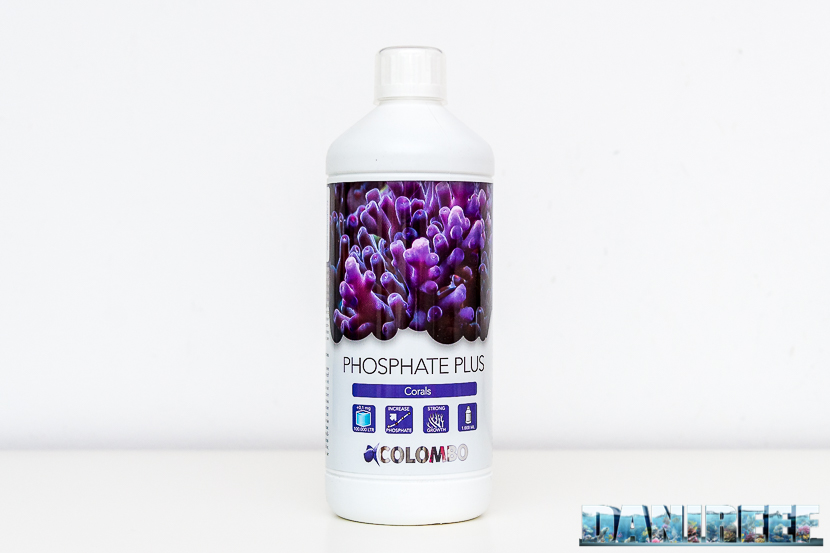 Phosphate Plus is a new additive for reef aquariums, produced especially for advanced reefers, by Colombo.
Phosphate Plus is a new additive for reef aquariums, produced especially for advanced reefers, by Colombo.
The biggest problem for marine aquarium beginners is keeping a low level of phosphates and nitrates. The mantra is keep oligotrophic conditions in the tank to prevent algae from flourishing. As we become more experienced, we buy more high-performing devices as lights, pumps, protein skimmer, etc; doing so we can have an undetectable amount of phosphates. This is a potential problem.
Zooxanthellae, the symbiotic algae living on the external surface of the corals, have a mutual relationship of survival with the coral itself, and they need phosphates to live. It sometimes happens that, even if we have a bioavailable source of phosphates, usually due to a high number of fish, they are absorbed by the algae and so they are not detectable, even if present.
n this case we have to add a controlled source of phosphates. We are helped here by Colombo Phosphate Plus, a bioavailable and controlled source of phosphates. According to Colombo, the phosphate level to keep in a marine aquarium, without algae, is between 0.03 and 0.06 mg/l, and I agree with this, though I prefer to stay closer to 0.03 mg/l. Remember that those values must be kept without algae, or final results could be affected.
Colombo Phosphate Plus adds 0.01 mg/l for every 100 liters with a 0.1 ml dosing. This means that for a 300 liter tank with a non detectable phosphate level, to reach the value of 0.03 mg/l we should add 0.9 ml of this product. Colombo suggests dosing up to 0.1 ml of product in a day, and to constantly monitor the phosphate level in the tank with a good test kit, to prevent algae and cyanobacteria issues.
It is available in a 1 liter pack and it costs 20,65 euros ($23 USD).
What do you think about it?
[Translated by Agnese Poggi]











0 Comments